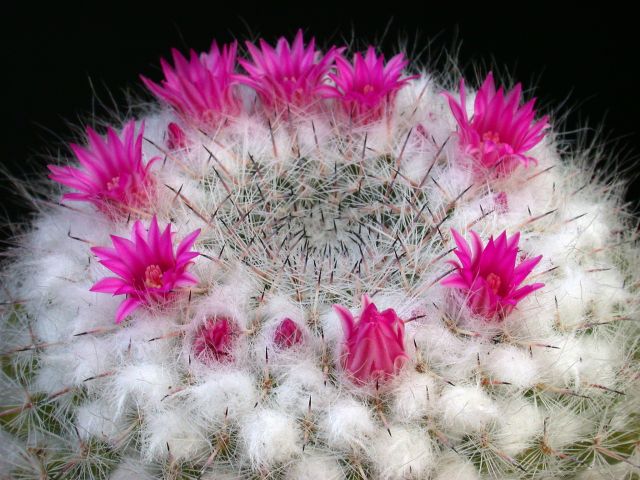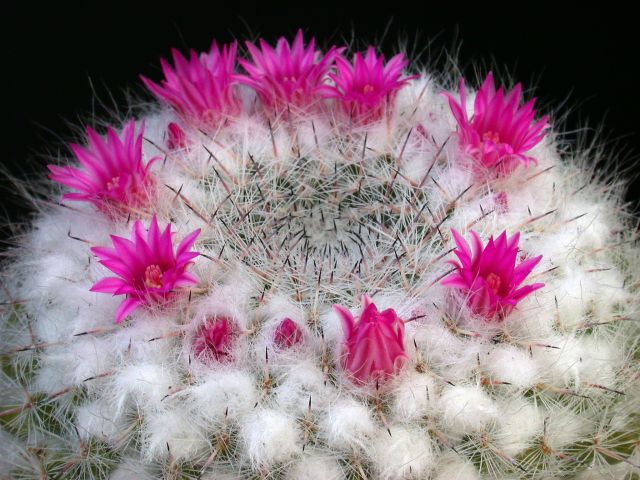Announce!!!
I created a new page “New offers” only for my customers and people who want to be my cuastomer. In the page you find very good offer for new rare cactus seedling (some of them are rarity).
The prices in this page are 20% to 30% less than on other pages in my website.
“New offers” is protected by password. No one can open it.
If you like to see the offers, send me email to the address: mikglad@cox.net with Subject: "New offer" and I'll email you the Login information. It is not necessary to buy something.
If you want to get a Newsletter ons a month email me with Subject: "All about cacti"
I will renew the page when I have new species for sale. So, time to time you can open the page and see what is on sale.
I will use your email only for answer your questions.
If you do not want more to receive my emails, reply adding to the existing Subject word Unsubscribe.
Mammillaria hahniana-The Old Lady Cactus is a good starter for a budding cactus collection. Buy Cacti for Sale Cactus for Sale, Best Prices Buy exotic and Rare cactus plants for sale.
Now all cacti are in dormancy. It is the best time to replant cacti. Absolutely no risk. Buy cactus plants. I offer more then 30% OFF. To see the new prices CLICK HERE.
Now my rare cacti are 5 - 6 cm in diameter. In March my cacti begin to grow and bloom. The prices will grow. I prolonged my offer up to December 31, 2013. DO BE QUICK!!!
It grows to 25 cm (10 in ) tall by 50 cm (20 in ) broad. The solitary spherical stems, 12 cm in diameter, are covered in white down and white spines. Reddish purple flowers are borne in spring and summer, sometimes forming a complete ring around the apex of the plant.[1]
The Old Lady Cactus is a good starter for a budding cactus collection.
This is an old favorite which comes in a variety of flavors. Traditionally, Mammillaria hahniana is a long haired woolly areoled plant and the longer and thicker the hairs, the more admired the plant is. It is quite variable
Mammillaria hahniana 3 year seedlings for sale Ø 2.5-3.5 cm. Price $5.00. I used seeds for these seedlings taken from their origin - Tamaulipas - Mexico

This is an old favourite which comes in a variety of flavours. Traditionally, Mammillaria hahniana is a long haired wolly areoled plant and the longer and thicker the hairs, the more admired the plant is. It is quite variable, and four subspecies have been defined to recognise the more commonly found variants. These are ssp. hahniana, ssp. woodsii, ssp. bravoe, and ssp. mendeliana.
Mammillaria hahniana detailed description
Family: Cactaceae (Cactus Family)
Scientific name: Mammillaria hahniana Werd. First description by Craig, Cact. Succ. J. (US) 15(3): 33 (1943) - as M. woodsii
Origin: Guanajuato, Queretaro de Arteaga, Tamaulipas - Mexico (North America)
Common English Names: Old Lady Pincushion
Synonyms: Mammillaria hahniana subsp. Hahniana; Mammillaria hahniana var. hahniana
Description: It grows to
|
This is an old favorite which comes in a variety of flavors. Traditionally, Mammillaria hahniana is a long haired woolly areoled plant and the longer and thicker the hairs, the more admired the plant is. It is quite variable, and four subspecies have been defined to recognize the more commonly found variants. These are ssp. hahniana, ssp. woodsii, ssp. bravoe, and ssp. mendeliana. The Old Lady Cactus is a good starter for a budding cactus collection. M. hahniana is a cactus with solitary or clustered stems to 20cm in height, with dense white bristles and fine spines; flowers 1cm in length, rose-red, followed by small red fruits Beautiful globular cactus is covered with white spines and dense white hair. Rings of vivid carmine flowers in Summer create dramatic contrast with white hairs. It is a native of Mexico. Bright light. Porous cactus soil. Water thoroughly when soil is dry to the touch. Protect from frost.. It is easy to grow, but rot prone if root is wet in winter. Flowers in late winter to mid spring depending on what zone it is in. The ring of pink flowers is pretty and can last for weeks, but each individual flowers last for only a few days. Read more: http://davesgarden.com/guides/pf/go/353/#ixzz2McKYPTIr Stem:. Globular cactus. Plants usually forming clumps. Stems globular, light green to Radial spines: 20 - 30, hairlike, white, 5 - Central spine(s): 1, white with reddish tips, to Flowers: Purplish red, 12 - Bloom time:. Late Spring/Early Summer Fruit:. Club shaped, red, 5 - Seeds: Brown. Allow unblemished fruit to ripen; clean and dry seeds. Properly cleaned, seed can be successfully stored. Read more:http://davesgarden.com/guides/pf/go/353/#ixzz2McJcbKSP Sun Exposure: Sun to Partial Shade Light Shade Recommended Temperature Zone: USDA Zone 9a: to Frost Tolerance: Hardy to Minimum Temperature: -4º C Soil pH requirements: 7.5 - 6.5 Watering Needs: Water sparingly, needs good drainage Cultivation: M. hahniana is one of several Mammillaria species to be cultivated. Intemperate regions it must be grown under glass with heat. It has gained theRoyal Horticultural Society's Award of Garden Merit[2] Propagation: From woody stem cuttings. Allow cut surface to callous over before planting From seed; direct sow after last frost. By grafting. Read more: http://davesgarden.com/guides/pf/go/353/#ixzz2McJ6TBjo Pests: May be attacked by mealybugs Notes: Drought-tolerant; suitable for xeriscaping Suitable for growing in containers Bibliography: John Pilbeam (1999) - Mammillaria The Cactus File Handbook - page 128.Edward F. Anderson (2001) - The Cactus Family - page 421.
|
|
